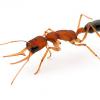Are there any?
(just in case it wasn't clear, i'm referring to ants that farm fungus...)
Edited by TheMicroPlanet, December 16 2019 - 3:58 PM.

Are there any?
(just in case it wasn't clear, i'm referring to ants that farm fungus...)
Edited by TheMicroPlanet, December 16 2019 - 3:58 PM.
I'm pretty sure Trachymyrmex Septentrionalis is still around, just very rare. Also it's only been recorded on long island.
Edited by DDD101DDD, December 16 2019 - 4:20 PM.
He travels, he seeks the p a r m e s a n.
Good luck finding them. Try finding a pine barren area. They're often common there. There can be thousands of colonies in a single pine barren.
Currently Keeping:
Camponotus chromaiodes, Camponotus nearcticus, Stigmatomma pallipes, Strumigenys brevisetosa, Strumigenys clypeata, Strumigenys louisianae, Strumigenys membranifera, Strumigenys reflexa, Strumigenys rostrata
Oh, and by the way, I've actually come across hundreds of Trachymyrmex septentrionalis nests in highly disturbed areas. There are literally hundreds of massive Trachymyrmex colonies in and around the University of South Carolina campus, even at the Statehouse. So you may have luck finding them if you're lucky. Look for sandy soil with plenty of caterpillar frass, which they use to farm their fungus. Talking about them so much makes me miss my colonies... ![]()
Currently Keeping:
Camponotus chromaiodes, Camponotus nearcticus, Stigmatomma pallipes, Strumigenys brevisetosa, Strumigenys clypeata, Strumigenys louisianae, Strumigenys membranifera, Strumigenys reflexa, Strumigenys rostrata
Yes; Trachymyrmex septentrionalis are known to occur specifically on Long Island in the Pine Barrens and do still live there. That appears to be the only place in New York where they've been found, likely because Long Island is the northernmost possible place where the climate is mild enough to support them. I would assume the extreme development of New York City to the west of the Trachymyrmex area also prevents them from leaving the island, cutting them off from the rest of the species...
If you want Trachymyrmex, you should probably just get a permit to transport them between states and then go find some where they are common. Use this tutorial to apply for a permit: https://docs.google....dit?usp=sharing
In case you were wondering, the tutorial came from a guy named SuperFrank, and can be found in a thread about permits. I assume you could send him a PM if you have any questions.
Edited by Antennal_Scrobe, December 17 2019 - 1:24 PM.
Currently keeping:
Tetramorium immigrans, Pogonomyrmex occidentalis
Myrmica punctiventris, Formica subsericea
Formica pallidefulva, Aphaeogaster cf. rudis
Camponotus pennsylvanicus
Camponotus nearcticus
Crematogaster cerasi
Temnothorax ambiguus
Prenolepis imparis
0 members, 0 guests, 0 anonymous users